Owl Museum (부엉이박물관)
1.8Km 2022-09-19
143, Bukchon-ro, Jongno-gu, Seoul
+82-2-3210-2902
The Owl Museum is filled with over 2,000 pieces of owl-themed arts and crafts collected from all over the world by the owner. Renovated from a house, the museum has a feel of an antique café as the owner offers a cup of coffee or tea to visitors. Located near the city, those interested in owls should stop for a view and a drink. Various stories of how the collection was gathered as well as information on owls are also interesting.
Baekbeom Kim Koo Statue (Baekbeom Plaza) (백범김구선생상(백범 광장))
1.8Km 2024-10-22
Hoehyeon-dong, Jung-gu, Seoul
Baekbeom Kim Koo Statue is located in Baekbeom Plaza in Namsan Park, Seoul. Erected in August 1969, the statue stands at a x_height of 10 meters. It commemorates the patriotic spirit of Kim Koo, who was both an independence activist and a politician in South Korea. During the Japanese colonial period, he actively participated in anti-Japanese movements, and after liberation, he played a leading role in the establishment of the government of the Republic of Korea.
Ojang-dong Hamheung Naengmyeon (오장동 함흥냉면)
1.8Km 2024-02-22
108 Mareunnae-ro, Jung-gu, Seoul
Ojang-dong Hamheung Naengmyeon originated when grandma Han Hyesun, who migrated from Hamgyeongnam-do to Seoul during the Korean War, began selling Hamheung-style "nongma guksu (starch noodles)," eventually naming it Hamheung naengmyeon (Hamheung cold buckwheat noodles). Its signature dish, bibim naengmyeon (spicy buckwheat noodles), features chewy noodles infused with a tangy-sweet seasoning, showcasing the expertise behind its preparation. Alongside the flavorful broth served as a base, the menu also includes variations like hoe naengmyeon (cold buckwheat noodles with raw fish), mul laengmyeon (cold buckwheat noodles), suyuk (boiled pork slices) and mandu.
Darakjeong (다락정)
1.8Km 2021-03-26
131-1, Samcheong-ro, Jongno-gu, Seoul
+82-2-725-1697
Darakjeong has been popular for a long time because of the simple taste of its traditional Mandu (Korean stuffed dumpling). Since its opening in 1991, tasty soup and scrumptious Mandu have been served. A fist-sized Mandu is fully packed with seasoned meat, bean-curd, and various vegetables. Its thick dough makes it chewy and delightful. For one person, “Manduguk”(boiled dumpling soup) is a good choice. The delicious and nourishing taste of Mandu goes well with the sweet, spicy, and fresh taste of the soup. Manduguk is served in a brass bowl which keeps the food warm while eating. For a large-size group, “Mandujeongol” cooked with various vegetables in a casserole is recommended. There are two types of Mandujeongol that have different tastes. The main characteristic of “Kimchi Mandujeongol” is its spicy flavor, which reminds people of the refreshing taste of Kimchi soup, and “Tojang Mandujeongol” expounds on the savory taste of bean-paste soup. Tojang means folk soybean-paste. “Nokdujeon”(a Korean pan-fried dish with green mung bean) is another famous dish at Darakjeong, which is pan-fried with a very light seasoning to emphasize the original taste of Nokdu (green mung bean). Salted oysters with hot pepper are served with Nokdujeon instead of soy sauce, which is a perfect match.
Pildong Myeonok (필동면옥)
1.8Km 2024-03-07
26, Seoae-ro, Jung-gu, Seoul
+82-2-2266-2611
Pildong Myeonok specializes in authentic pyeongyang naengmyeon (pyeongyang cold buckwheat noodles). Their signature dish is Pyeongyang naengmyeon (Pyeongyang cold buckwheat noodles), which has a light and refreshing broth and chewy noodles. Mandu and Mandut guk (Mandu soup) are also popular dishes to go with it. Having been selected for the Michelin Guide Seoul 2023, this restaurant is a favorite among locals and tourists alike for its flavorful noodles.
Seoul Yakhyeon Catholic Church (서울 약현성당)
1.8Km 2020-03-26
447-1, Cheongpa-ro, Jung-gu, Seoul
+82-2-362-1891
Yakhyeon Catholic Church was established as a result of Korea gaining religious freedom in the 23rd year of King Gojong’s reign (1886) and the subsequent increase of the Catholic population. In 1891, Myeongdong Cathedral's head priest Doucet laid down the foundation stone in Hap-dong. Coadjutor bishop Coste was in charge of design and construction and the building was eventually completed in 1892. The church was named after "Yakjeonhyeon," or a hill of medicinal herbs. This is because the place where the church is located was once a hilly area covered with medicinal herbs. Later on, Yakjeonhyeon was shortened to Yakhyeon and it became the name of the hilly area between Malli-dong and Seoul Station.
Yakhyeon Catholic Church was the first Western-style church ever built in Korea. It's Gothic architecture features a 12-meter-wide and 32-meter-long cruciform construction with low arched windows and a pointed-arch entrance gate.
Haepungbuwongun Yun Taekyeong's Jaesil (해풍부원군윤택영댁재실)
1.8Km 2021-11-10
28, Toegye-ro 34-gil, Jung-gu, Seoul
+82-2-3396-5882
Haepungbuwongun Yun Taekyeong's Jaesil is a shrine house built by the father-in-law of King Sunjong of Joseon dynasty in 1906 when his daughter was proclaimed the crowned princess of Joseon and entered Changdeokgung Palace to later become Queen Sunjeong. Red pine trees salvaged from the demolition of Gyeongungung Palace were used to construct the house. It was originally located in Jegi-dong, Dongdaemun-gu, but was later restored and moved to its present location. The shrine of the house that was destroyed in 1960 was also restored.
Because the house is more of a shrine rather than residential living quarters, it has many unique features. For example, unlike other houses, it has the anchae (women’s quarters) located across from sarangbang (men’s quarters) with daecheong (living room) positioned between them.
The Museum of Medicine (서울대학교병원의학박물관)
1.8Km 2024-03-18
101 Daehak-ro, Jongno-gu, Seoul
The Museum of Medicine is located in the building of the former Daehan Medical Center, the oldest modern hospital in Korea. It is a medical museum that provides a comprehensive view of the development of modern medicine in Korea, the history of medical devices, and the transformation of Seoul National University Hospital. Through permanent and special exhibitions, the museum showcases medical artifacts and documents related to the history of medicine.
Nunnamujip (눈나무집)
1.8Km 2020-06-16
136-1, Samcheong-ro, Jongno-gu, Seoul
+82-2-739-6742
Nunnamujip is famous for a North Korean dish called, “Kimchi mari guksu”, which is a noodle dish in cold kimchi soup containing toasted laver, a boiled egg, and sesame. The soup is refreshingly cold and a little spicy. For “Kimchi mari bap”, a bowl of rice is put into cold kimchi soup instead of noodles. The taste is very unique. In addition to Kimchimari, “Tteokgalbi” is a popular dish on the menu as well.
The main restaurant is located in the basement, which has only limited seating capacity with a few tables. As a result, many people usually wait in line for lunch or dinner. A second franchise has opened in a three-story building across the street. To enjoy a quaint atmosphere, the first establishment is better, but the new one’s interior design is much more modern and fancier, giving it a fresh altering look.
Hangeureut (한그릇)
1.8Km 2021-03-18
136, Samcheong-ro, Jongno-gu, Seoul
+82-2-720-5613
A store that also serves delicious meat noodles. The best menu at this restaurant is rice soup. This is a Korean cuisine located in Jongno, Seoul.
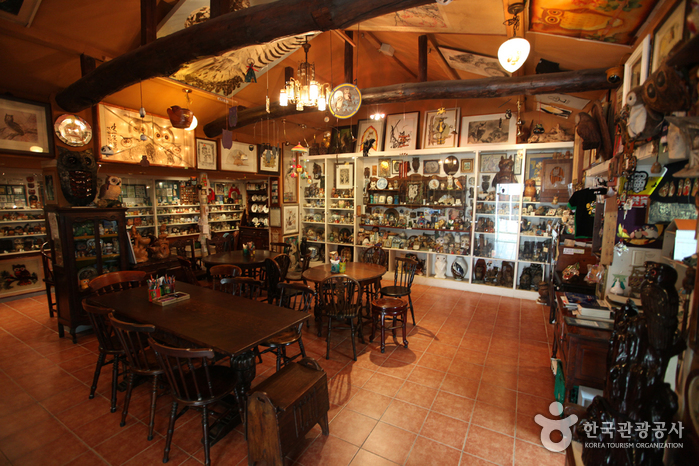

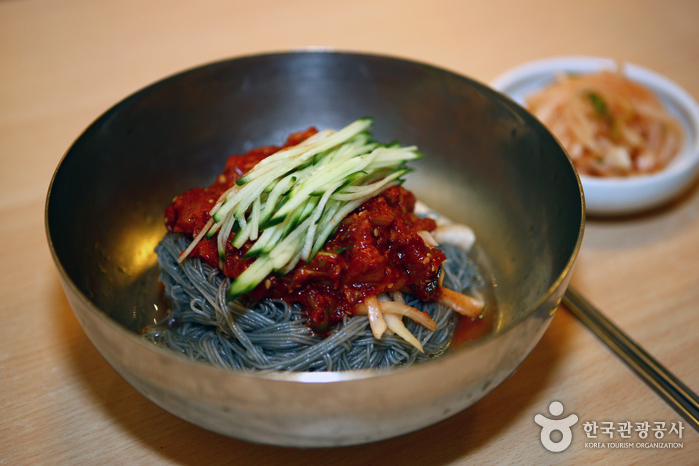

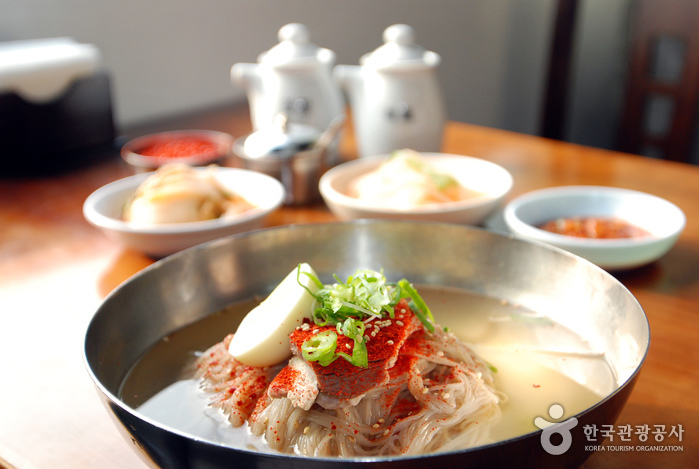
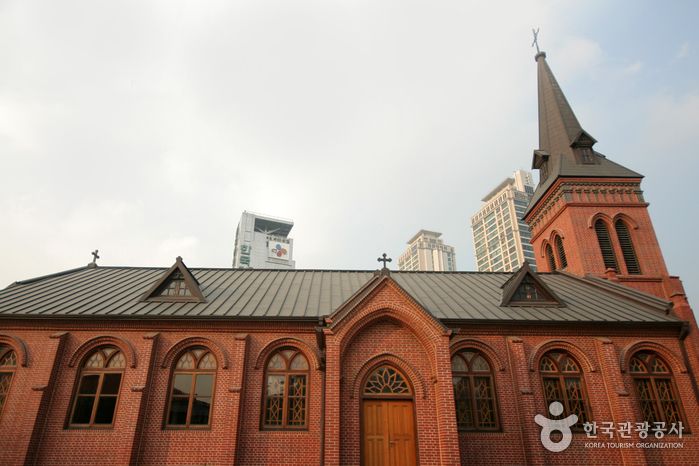
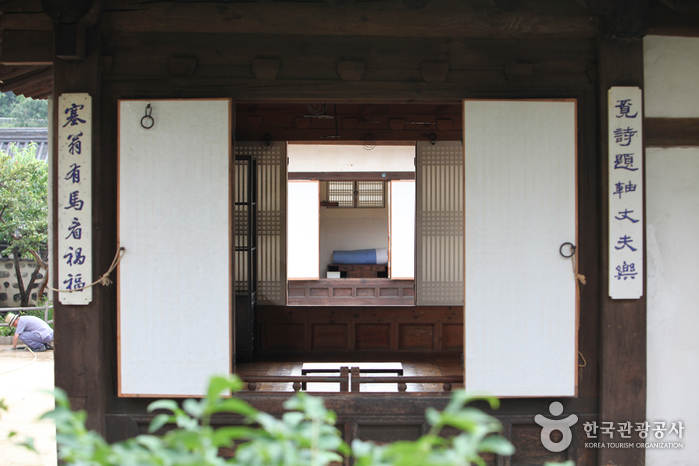
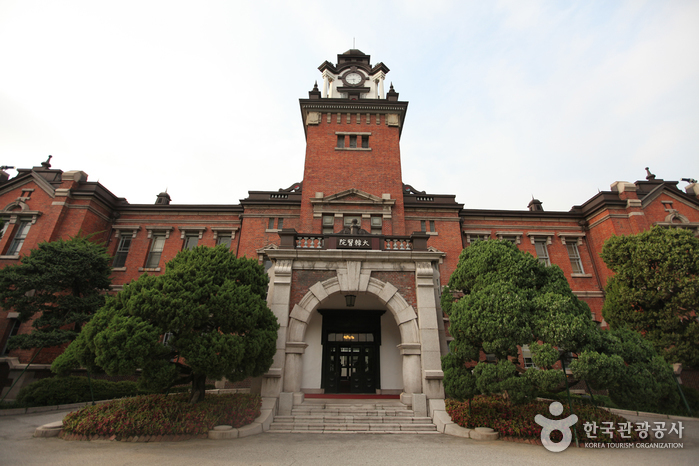
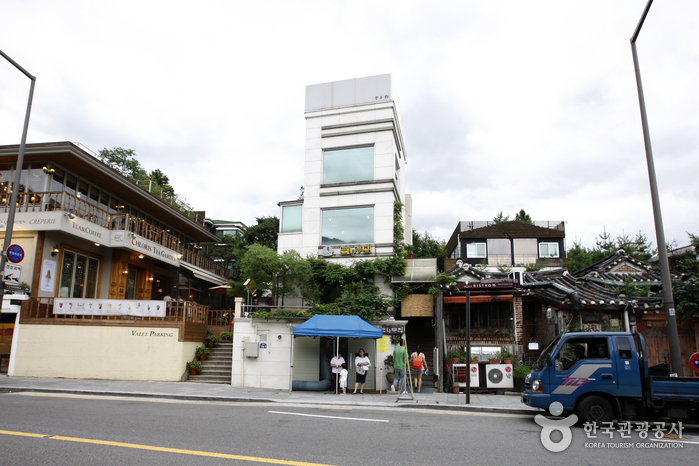
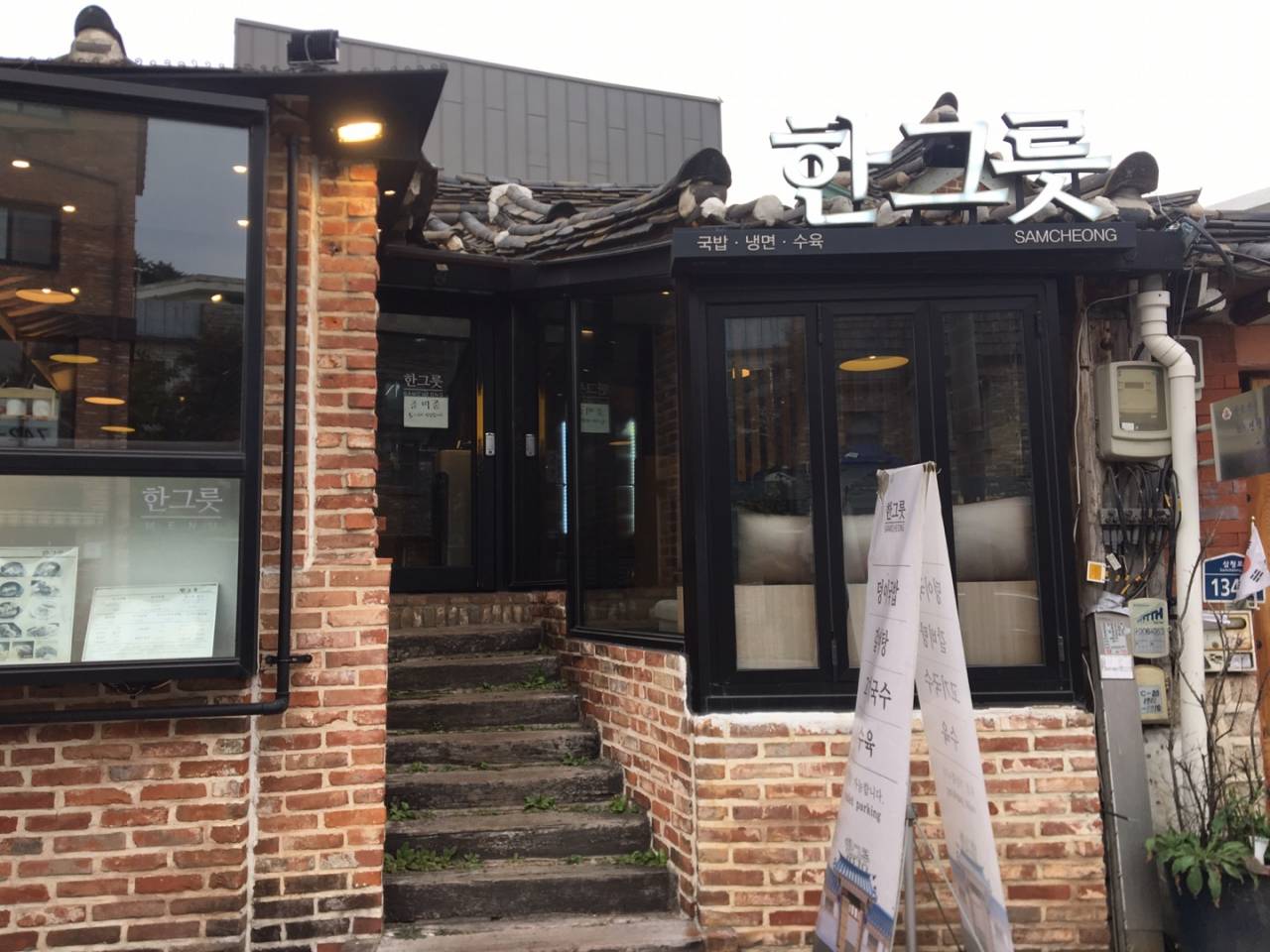
 English
English
 한국어
한국어 日本語
日本語 中文(简体)
中文(简体) Deutsch
Deutsch Français
Français Español
Español Русский
Русский